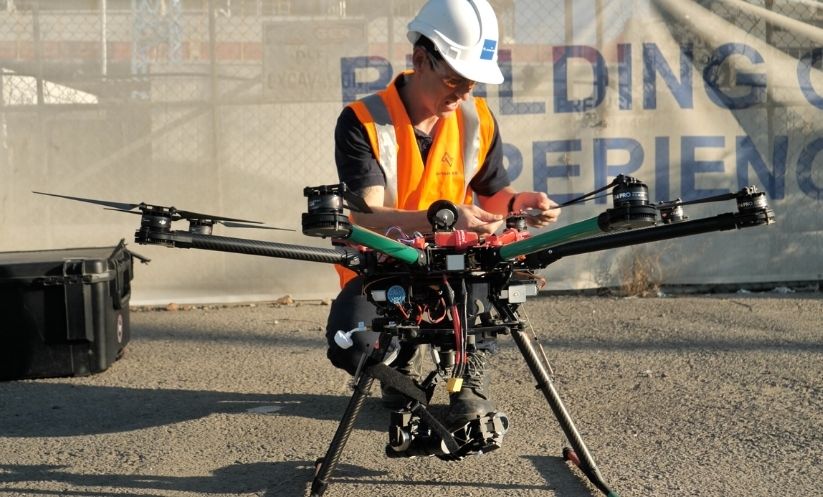In the dynamic world of construction, technological advancements are continually reshaping the landscape. One such innovation that has made a significant impact is the use of drones, particularly in roof inspections and construction. Drones, also known as Unmanned Aerial Vehicles (UAVs), have revolutionized the way we approach these tasks, offering a safer, more efficient, and more comprehensive method of assessing and constructing roofs. This article delves into the transformative role of drones in the roofing industry, exploring their applications, benefits, and the future potential they hold.
The Usage of Drones in Roofing
The integration of drones into the roofing industry marks a significant shift from traditional methods. Traditionally, roof inspections and construction involved manual labor, with workers physically climbing onto roofs. This process was time-consuming and labor-intensive and posed significant safety risks.
The advent of drones has changed this narrative. Equipped with high-resolution cameras and advanced sensors, drones can now capture detailed images and videos of a roof without the need for a human to set foot on it. This technology allows for a thorough inspection of every nook and cranny, including areas that are typically hard to reach or see.
Moreover, drones can collect data much faster than a human inspector, significantly reducing the time it takes to conduct an inspection. This efficiency is particularly beneficial in large-scale projects or when a quick turnaround is required, such as after a severe weather event.
In the construction phase, drones provide valuable aerial perspectives, helping contractors plan and execute roofing projects with greater precision. They can monitor progress, identify potential issues, and even assist in the placement of materials in some cases.
The use of drones in roofing is a testament to the industry’s willingness to embrace technology to improve safety, efficiency, and quality. The following sections will delve deeper into the specific applications and benefits of drones in roof inspections and construction.
Enhancing Safety and Reducing Risks
One of the most significant benefits of using drones in roof inspections and construction is the enhancement of safety. Working on roofs is inherently risky. According to the Occupational Safety and Health Administration (OSHA), falls are the leading cause of death in the construction industry, and roofs pose particular hazards due to their height and potential instability.
Drones mitigate these risks by reducing the need for workers to physically access the roof. Instead of climbing ladders and walking on potentially unstable surfaces, inspectors and contractors can operate drones from the safety of the ground. This not only reduces the risk of falls but also minimizes exposure to other hazards such as electrical wires, unstable structures, or hazardous materials that might be present on the roof.
In addition to protecting human lives, this approach also reduces potential liability and insurance costs for construction companies. Fewer accidents mean fewer workers’ compensation claims and lower insurance premiums, contributing to the financial health of the business.
Furthermore, drones can be particularly useful in inspecting roofs that are in poor condition or have been damaged by severe weather. In these situations, the structure may be unstable, and sending a human inspector could be dangerous. Drones can safely assess the damage and provide detailed data, enabling contractors to plan repairs without compromising safety.
Improving Efficiency and Accuracy
The use of drones in roof inspections and construction significantly enhances efficiency. Traditional methods of roof inspection can be time-consuming, requiring inspectors to physically traverse the roof and manually document their findings. Drones, on the other hand, can cover large areas quickly, capturing high-resolution images and videos that can be reviewed and analyzed in real-time or saved for later examination.
Moreover, drones equipped with thermal imaging cameras can detect issues that might be invisible to the human eye, such as moisture trapped under the roofing material. Moisture under roofing is a hazard associated with many kinds of roofing material, from modern metal roofing to traditional tiled roofs. However, thermal imaging allows for early detection of potential problems, saving time and money on extensive repairs down the line.
In the construction phase, drones provide a bird’s-eye view of the project, enabling contractors to monitor progress, manage resources more effectively, and spot any potential issues early. They can also assist in mapping and surveying the site, ensuring accurate measurements and helping to plan the project more effectively.
The Future of Drones in Roofing
As drone technology continues to evolve, its applications in the roofing industry are set to expand. Future developments may include drones equipped with advanced AI capabilities, able to identify potential issues autonomously and provide predictive maintenance suggestions. Drones might also be used to perform minor repairs or maintenance tasks, further reducing the need for human workers to access dangerous heights.
Moreover, as regulations around drone usage continue to evolve, we can expect to see an increase in their adoption across the construction industry. Companies that embrace this technology will likely gain a competitive edge, offering faster, safer, and more efficient services to their clients.
Wrapping Up
The integration of drones into roof inspections and construction represents a significant step forward for the construction industry. Drones are set to revolutionize the way we approach roofing. As we continue to navigate this exciting frontier, one thing is clear: the sky’s the limit for the potential of drones in roofing and construction.

